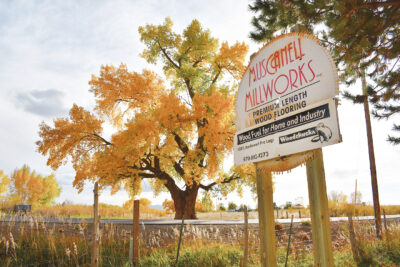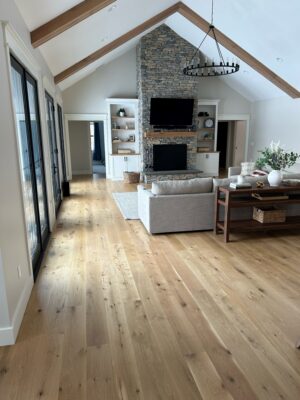When the Real American Hardwood Coalition (RAHC) conducted research to identify consumer awareness about real wood products, the data confirmed that there is a lot of confusion about what is and is not real wood. Fortunately, the data also showed that consumers overwhelmingly preferred real wood over wood lookalike products, which presents an opportunity for our industry. It falls upon us to educate consumers about the uses and benefits of real wood, which is the mission of RAHC.
The research also identified what consumers consider to be important when selecting products for their homes: appearance, durability, value, health, and sustainability. Fortunately, real wood products tick all those boxes.
Take health, for example. One of the many benefits of real Hardwood floors is that they can help improve indoor air quality in the home by minimizing allergens that impact human health. These can include pollen, mold spores, dust mites, and animal dander.
Pollen is one of the most common allergens. During the changing seasons, plants release tiny pollen particles into the air to fertilize other plants of the same species. Typically, trees, weeds, and grass cause the most allergic reactions to pollen.
Mold spores are a common allergen as well. These are everywhere, and occur most often from July until early fall. However, because mold spores can develop indoors as well as outdoors, they may cause allergic reactions all year long. The most common sources of mold spores include mold, mildew, and fungi.
Dust mites are another allergen. They typically are too small to see, and are nearly impossible to completely eliminate from the home. Dust mites thrive in temperatures between 68 to 77 degrees Fahrenheit, and in humidity levels between 70 to 80 percent. They feed on tiny flakes of human skin, which are shed at a rate of 1.5 grams per day by an average adult. To provide a little perspective, this is enough to feed about one million dust mites.
Another common allergen, animal dander, is caused by the dead skin cells of animals. Common sources are pets, such as dogs and cats, but animal dander can come from any type of animal. Many people think that pet fur is an allergen, but it is not. It can, however, collect other allergen sources, such as pollen.
Allergens like these can exist everywhere. Some are more common outdoors, like pollen and mold spores, while others are more common indoors, like dust mites and animal dander. All allergen sources, however, can be present anywhere at any time. And because the cost of air-borne allergy-related illnesses can be staggering – up to $17.5 billion in health care costs and more than 6 million work and school days lost each year – it is in everyone’s best interest to prevent and minimize allergy triggers whenever possible.
While outdoor allergens can be hard to control, indoor allergens can be minimized with frequent dusting, vacuuming, and washing.
Flooring is one example of where indoor allergens can accumulate. Certain types of flooring, such as carpet, are gathering places for allergens. Small microorganisms, pollen, dust, dust mites, mold, animal dander, and other substances tend to accumulate in carpet fibers. Other flooring types, such as real wood, tend to minimize the accumulation of allergens because there are no fibers to trap these substances. Taking steps to minimize these kinds of allergens can result in improved indoor air quality.
In the United States, the Environmental Protection Agency (EPA) works to protect human health and the environment. Monitoring the air we breathe, including assessing indoor air quality, is one way the agency accomplishes this.
When it comes to flooring, the EPA finds that Hardwood floors improve indoor air quality. This is because Hardwood floors do not harbor microorganisms or pesticides that can be tracked in from outdoors. Hardwood floors also minimize the accumulation of dust, mold, and animal dander. Both of these findings result in improved indoor air quality.
Wood flooring also improves indoor air quality in another, less tangible, way. This is because wood is a carbon-neutral product. As most people know, as a tree grows, it takes in carbon dioxide from the environment and produces oxygen. What most people do not know, however, is that products made from wood, including wood flooring, store carbon during their service lives. In other words, even after the tree used to make wood is cut down and manufactured into flooring, it continues to store carbon during its entire service life. That’s quite a green story, and is yet another way wood flooring improves indoor air quality.
Communicating these positive messages to consumers is critical if we are to regain market share from wood lookalike products. You can help by contributing to the RAHC’s campaign to accomplish just that. Visit realamericanhardwood.org to learn more.








